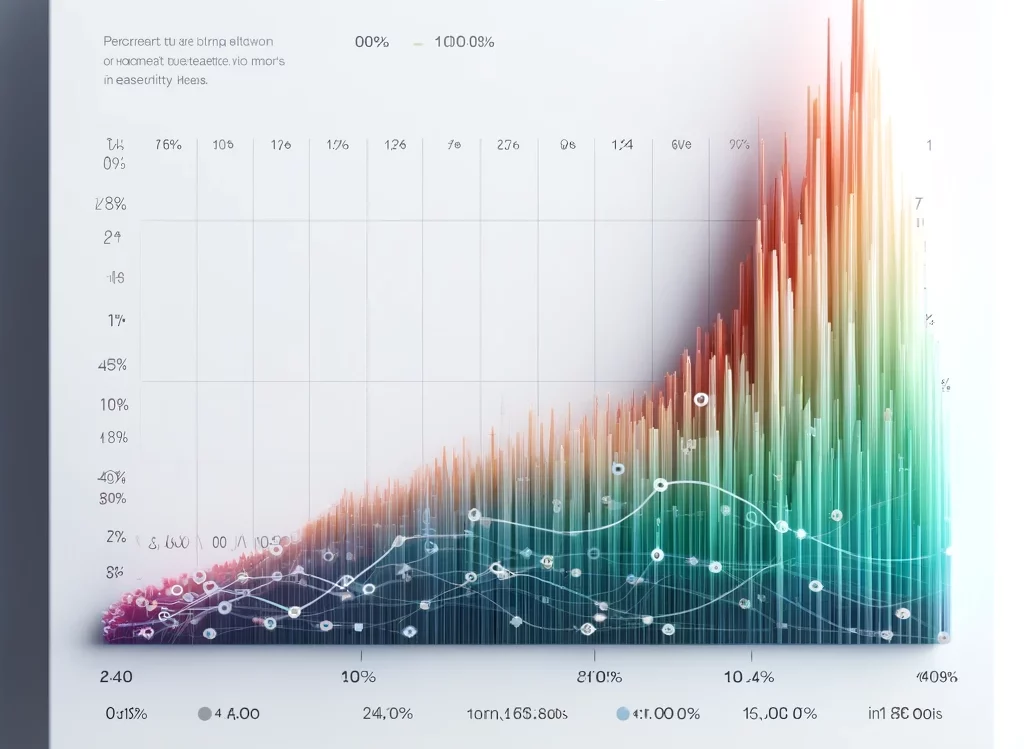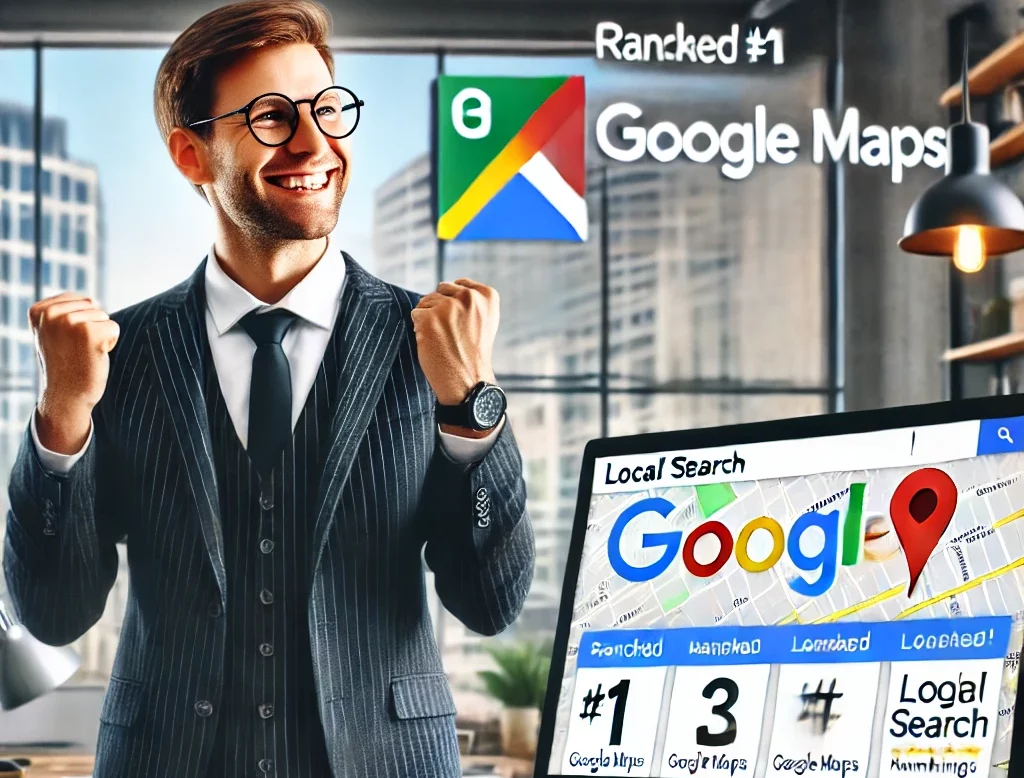In today’s digital landscape, local SEO for Google Maps isn’t just important—it’s essential. Why? Because when people search for local businesses, Google Maps is often their go-to tool. Let’s dive into the world of local SEO and discover how you can dominate Google Maps rankings.
Table of Contents
Understanding the Power of Google Maps in Local Search
Google Maps has revolutionized local search. It’s not just a navigation tool; it’s a powerful platform for business discovery. When users search for products or services “near me,” Google Maps often takes center stage.

The Critical Role of Google Maps in Local Business Success
Think about it. When was the last time you searched for a local business without checking Google Maps? Exactly. It’s become second nature for consumers. Your presence (or lack thereof) on Google Maps can make or break your local visibility.
Local businesses thrive on Google Maps visibility. It’s like having a giant billboard in the digital world, pointing customers straight to your door. But here’s the kicker: you need to optimize your presence to stand out.
How Google Maps Influences Local Search Rankings
Google’s local search algorithm is complex, but Google Maps plays a crucial role. Your business’s location, relevance, and prominence all factor into your rankings. It’s not just about being on the map—it’s about being at the top of the list.
According to a study by Moz, Google Business Profile signals makeup 36% of local pack ranking factors. That’s huge! It means your Google Maps listing directly impacts your local SEO success.
Key Statistics: Google Maps Usage and Local Search Behavior
Let’s talk numbers. Did you know that 46% of all Google searches have local intent? Or that 76% of people who search for something nearby on their smartphone visit a related business within a day? These stats highlight the importance of local SEO for Google Maps.

Mastering Your Google Business Profile for Map Dominance
Your Google Business Profile is your ticket to Google Maps success. It’s like your business’s digital storefront. Let’s make it shine!
- Step-by-Step Guide to Claiming and Verifying Your Profile: First things first: claim your profile. Head to Google Business Profile, search for your business, and click “Claim this business.” If it’s not listed, you’ll need to add it. Verification usually involves receiving a postcard with a code—enter it to prove you’re the real deal.
- Optimizing Your Business Information for Maximum Impact: Now, let’s beef up that profile. Add your business name, address, phone number, website, and hours of operation. Be thorough and accurate. Remember, consistency is key in local SEO. Don’t stop there. Add your business category, attributes, and a compelling description. Use keywords naturally, but don’t stuff them. Google’s smart—it knows when you’re trying too hard.
- Leveraging Photos and Virtual Tours to Stand Out: A picture’s worth a thousand words, right? Well, in local SEO, it might be worth a thousand clicks. Add high-quality photos of your business, products, and team. Consider a virtual tour to give potential customers an immersive experience.
- The Art of Managing and Responding to Customer Reviews: Reviews can make or break your local SEO efforts. Encourage happy customers to leave reviews. But here’s the real secret: respond to every review, good or bad. It shows you care and boosts engagement.
Website Optimization Strategies for Google Maps Ranking
Your website and Google Maps listing should work in harmony. Let’s make sure they’re singing the same tune.
- Integrating Local Keywords: Use local keywords throughout your site, but do it naturally. “Best pizza in [Your City]” works better than “Best pizza [Your City] delicious pizza [Your City] tasty pizza [Your City].” The latter? That’s keyword stuffing, and Google’s not a fan.
- Building a Strong Local Backlink Profile: Local backlinks are gold for Google Maps SEO. Partner with other local businesses, sponsor local events or get listed in local directories. These local link-building strategies can significantly boost your local authority.
- Embedding Interactive Maps: Embed a Google Map on your website showing your location. It’s not just user-friendly—it sends a strong signal to Google about your physical location. Plus, it makes it easy for customers to find you.
- Ensuring NAP Consistency Across the Web: NAP stands for Name, Address, and Phone number. Make sure this information is consistent everywhere online. Discrepancies confuse Google and can hurt your rankings.
Decoding Google’s Local Search Algorithms
Understanding how Google thinks is half the battle. Let’s peek behind the curtain.
- The Proximity Factor: Location, location, location. It’s not just a real estate mantra—it’s crucial for local SEO. Google considers the user’s location when showing results. The closer you are, the better your chances of ranking.
- Building Business Prominence and Authority: Prominence is about how well-known your business is. Citations, links, reviews, and your overall online presence contribute to this. The more prominent you are, the higher you’ll rank.
- Aligning Your Content with User Intent and Search Relevance: Understanding user intent is crucial. If someone searches for an “emergency plumber,” they need help now. Make sure your content and Google Maps listing reflect that urgency.
Advanced Tactics for Google Maps SEO Domination
Ready to take your local SEO to the next level? Let’s explore some advanced strategies.
- Leveraging Google Posts for Increased Engagement: Google Posts allow you to share updates directly on your Business Profile. Use them to promote events, offers, or new products. They’re a great way to keep your listing fresh and engaging.
- Local Event Marketing: Hosting or sponsoring local events? Make sure they’re on your Google Maps listing. It shows you’re an active part of the community and can boost your local relevance.
- Using Schema Markup to Enhance Local SEO: Schema markup helps search engines understand your content better. Use local business schema to provide detailed information about your business. It can lead to rich snippets in search results, making your listing more attractive.
- Voice Search Optimization for Local Queries: “Hey Google, find a coffee shop near me.” Voice search is on the rise, especially for local queries. Optimize for natural language and question-based searches to capture this growing market.
Measuring and Analyzing Your Local SEO Performance
You can’t improve what you don’t measure. Let’s talk metrics.
- Essential Metrics for Tracking Google Maps Success: Keep an eye on your Google Business Profile insights. Track views, clicks, calls, and direction requests. These metrics give you a clear picture of how well your listing is performing.
- Tools and Techniques for Local SEO Audits: Regular audits are crucial. Use tools like Grexa’s Local SEO Audit to identify areas for improvement. It can help you spot issues with your NAP consistency, review management, and more.
- Competitor Analysis in Local Search Landscapes: Know thy enemy. Analyze your competitors’ Google Maps listings. What are they doing well? Where are they falling short? Use these insights to refine your own strategy.
Mobile Optimization: A Critical Factor for Google Maps Success
In the age of smartphones, mobile optimization isn’t optional—it’s mandatory.
- Mobile-First Indexing and Its Impact on Local SEO: Google uses mobile-first indexing, meaning it primarily uses the mobile version of your site for ranking. Ensure your site is mobile-friendly to avoid penalties.
- Improving Mobile User Experience for Better Rankings: Fast loading times, easy navigation, and clickable phone numbers are must-haves. A smooth mobile experience keeps users happy and signals quality to Google.
- Leveraging Mobile-Specific Features in Google Maps: Take advantage of mobile-specific features like the “Call now” or “Get directions” buttons. They improve user experience and can lead to more conversions.
Local Link Building Strategies for Google Maps SEO
Links are the backbone of SEO, and local link building is no exception.
- Identifying and Securing High-Quality Local Backlinks: Focus on quality over quantity. A link from your local chamber of commerce is worth more than dozens from low-quality directories.
- Leveraging Local Partnerships and Sponsorships: Partner with other local businesses or sponsor local events. These partnerships often lead to valuable backlinks and boost your local authority.
- Creating Linkable Local Content Assets: Create content that local publications want to link to. This could be local guides, event calendars, or industry reports specific to your area.
Harnessing the Power of Customer Reviews for Local SEO
Reviews are the lifeblood of local businesses. They’re also a key factor in Google Maps rankings.
- Strategies for Generating Authentic, Positive Reviews: Don’t be shy—ask happy customers for reviews. Make it easy by providing direct links to your Google review page.
- Responding to Negative Reviews: Negative reviews happen. Respond professionally and try to resolve issues offline. This shows potential customers that you care about their experience.
- Leveraging Reviews for Enhanced Rich Snippets: Reviews can lead to rich snippets in search results, making your listing stand out. Encourage detailed reviews that mention specific products or services.
Future-Proofing Your Local SEO Strategy
The only constant in SEO is change. Stay ahead of the curve with these forward-thinking strategies.
- Emerging Trends in Local Search and Google Maps: Keep an eye on trends like augmented reality, AI-powered recommendations, and local inventory search. These could reshape local SEO in the coming years.
- Adapting to Algorithm Updates and New Features: Google’s always tweaking its algorithm. Stay informed about updates and be ready to adjust your strategy. Flexibility is key in the ever-changing world of SEO.
- Preparing for the Integration of AR and AI in Local Search: Augmented reality and AI are set to revolutionize local search. Start thinking about how you can leverage these technologies to enhance your local presence.
Case Studies: Local SEO Success Stories with Grexa
Let’s look at some real-world examples of businesses crushing it on Google Maps.
Real-World Examples of Businesses Dominating Google Maps
Take “Joe’s Pizza” in New York City. They optimized their Google Business Profile, encouraged reviews, and created location-specific content. The result? A 200% increase in Google Maps views and a 150% boost in direction requests.
Lessons Learned and Actionable Takeaways
The key takeaway? Consistency and engagement are crucial. Regular updates, prompt responses to reviews, and a well-optimized profile can lead to dramatic improvements in visibility and foot traffic.
Conclusion: Maximizing Your Google Maps Visibility
Local SEO for Google Maps isn’t rocket science, but it does require effort and strategy. By optimizing your Google Business Profile, building local relevance, and staying on top of trends, you can dominate local search results.
Remember, local SEO is an ongoing process. Keep refining your strategy, stay engaged with your customers, and watch your Google Maps visibility soar. Ready to take your local SEO to the next level? Grexa’s Local SEO services can help you navigate the complex world of Google Maps optimization.

FAQ
What is local SEO for Google Maps?
Local SEO for Google Maps involves optimizing your online presence to improve visibility in local search results and on Google Maps.
How can I improve my Google Maps ranking?
Optimize your Google Business Profile, ensure NAP consistency, gather positive reviews, and create location-specific content on your website.
Why is Google Maps important for local businesses?
Google Maps is often the first place people turn to when searching for local businesses, making it crucial for visibility and customer acquisition.
How often should I update my Google Business Profile?
Regularly update your profile with new photos, posts, and any changes to your business information. Aim for at least monthly updates.